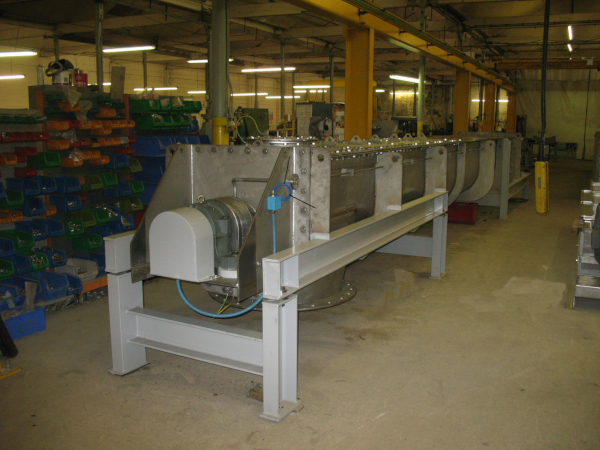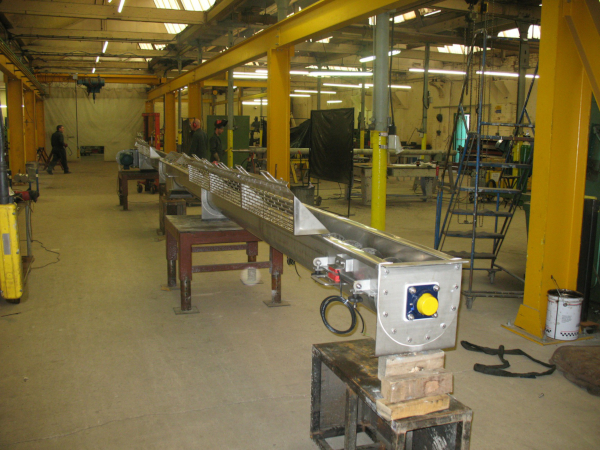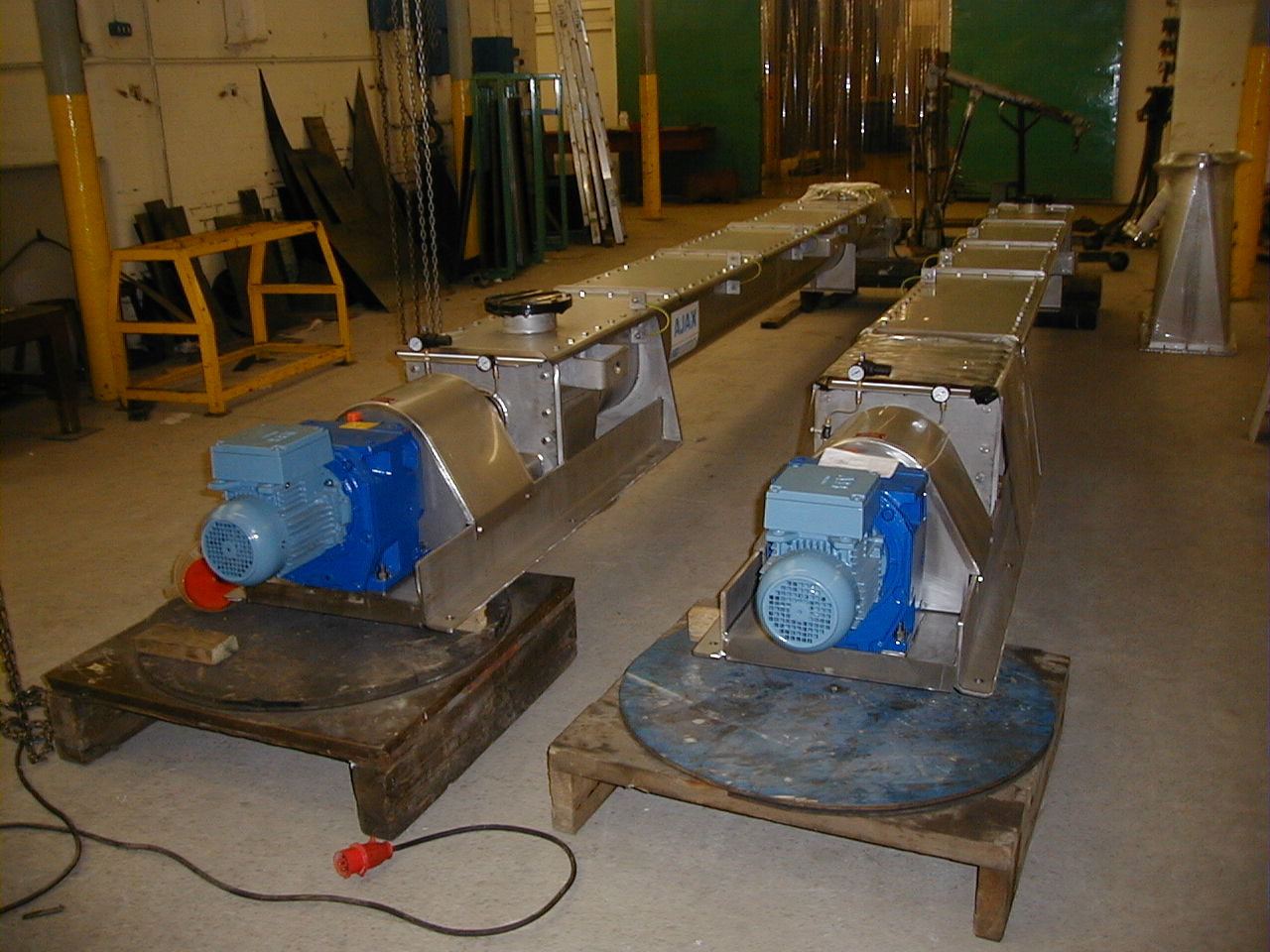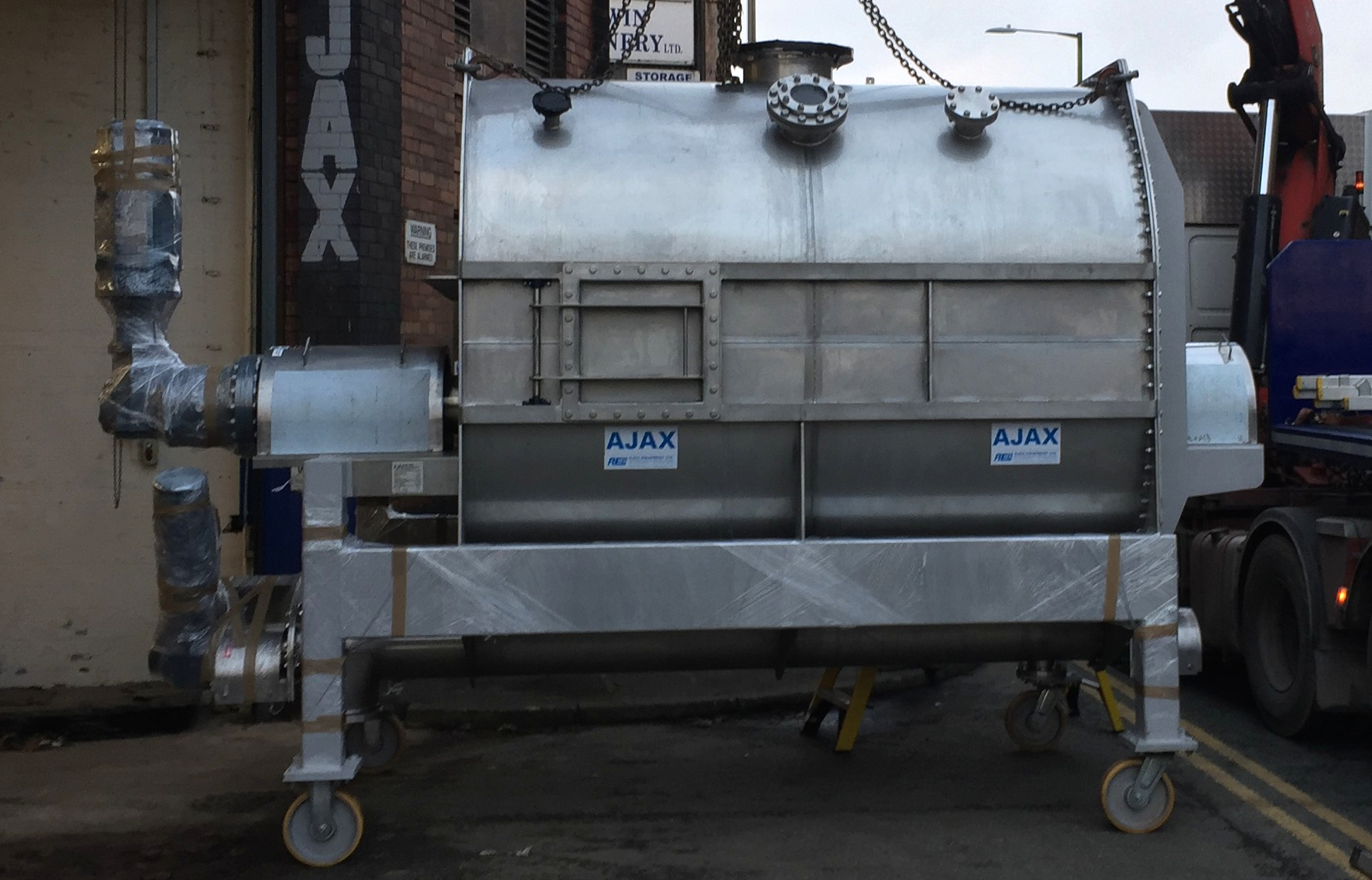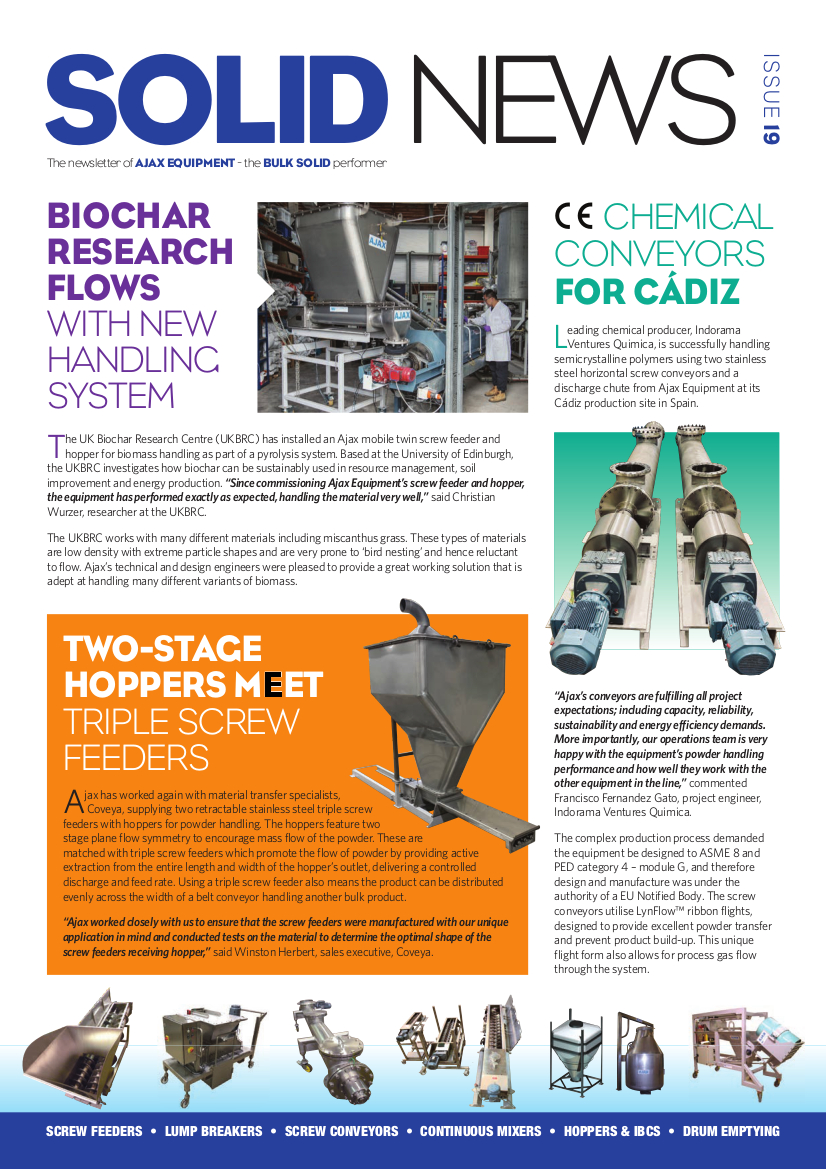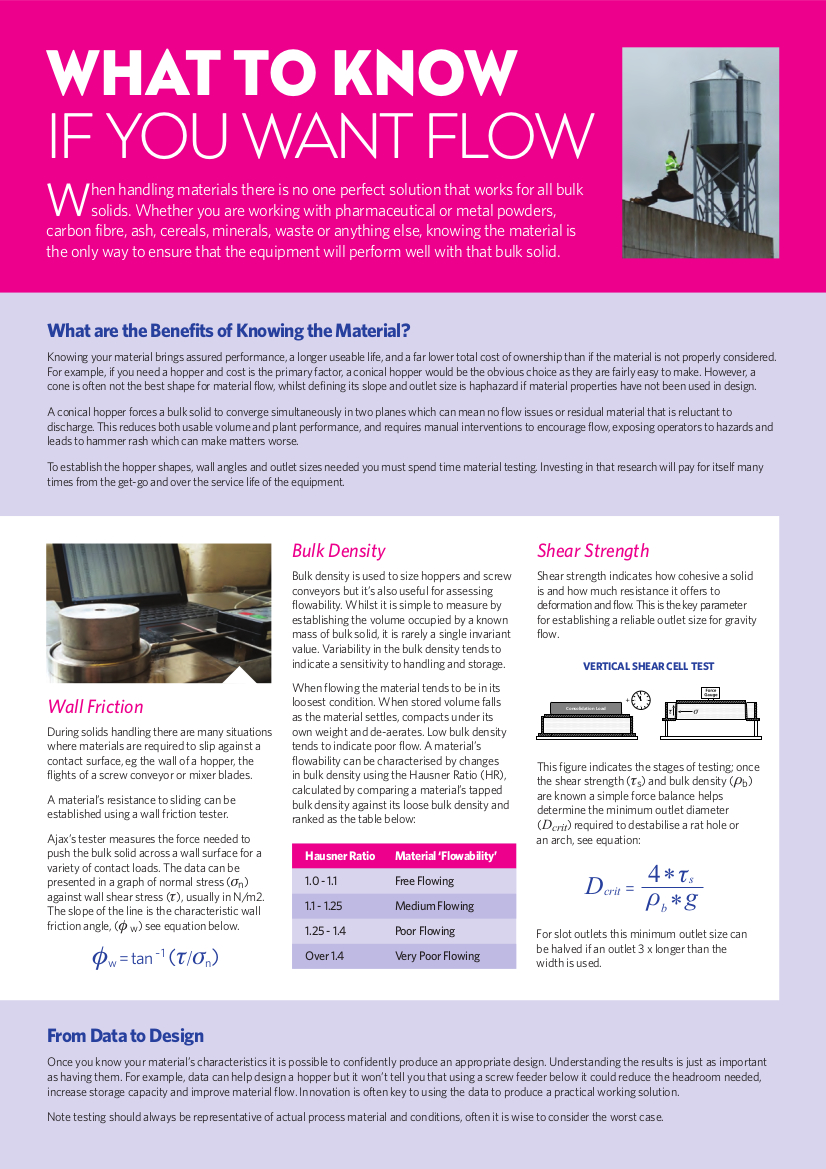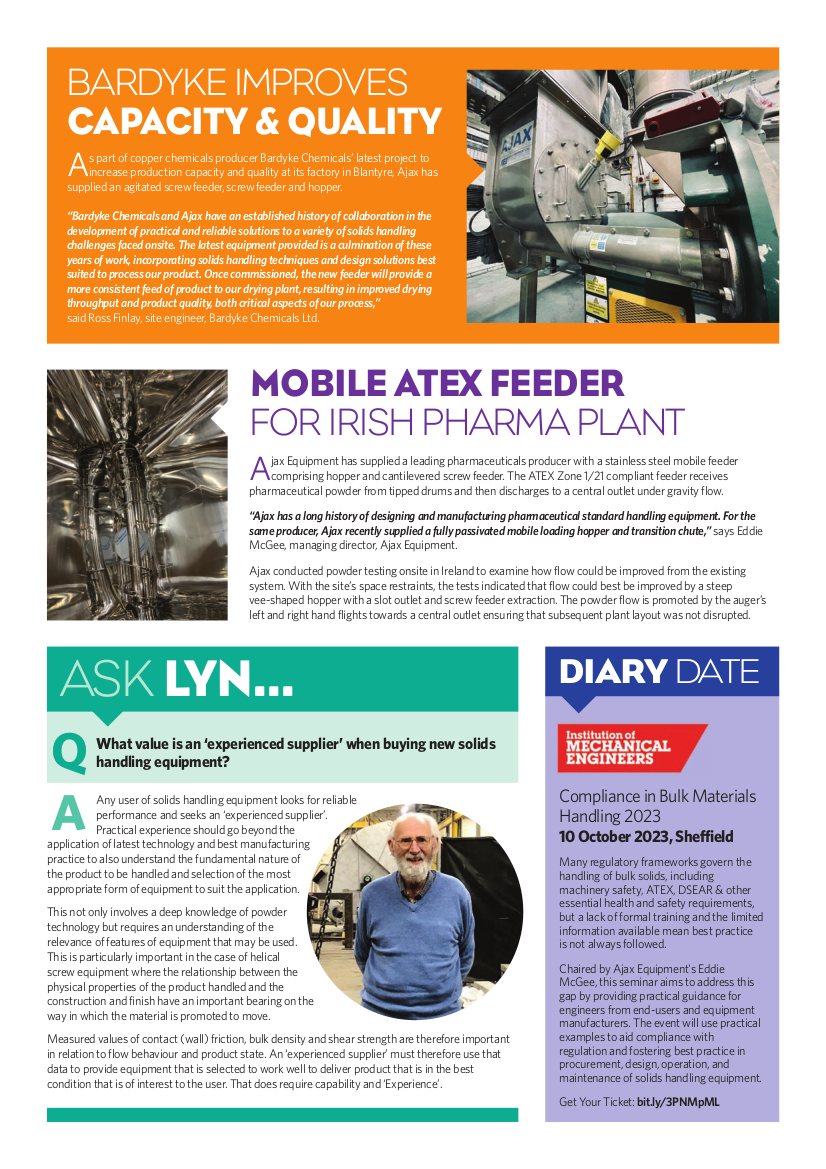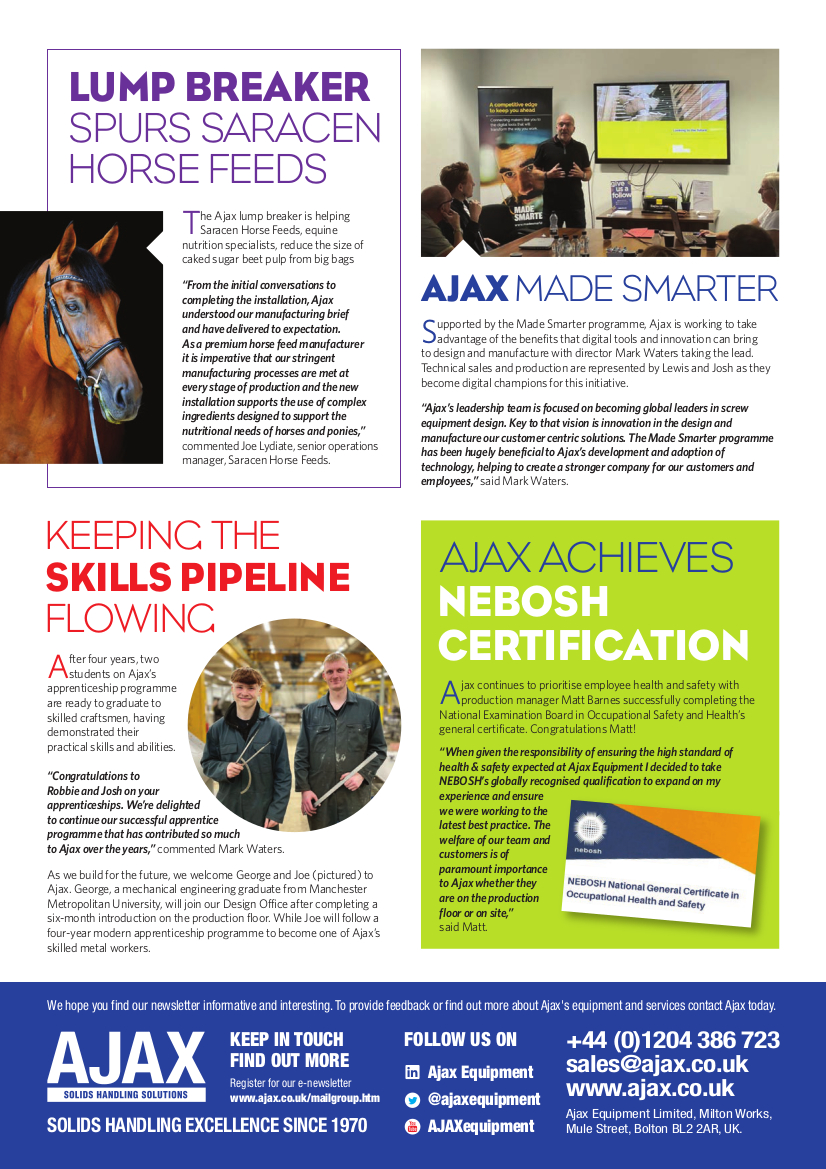Key Steps to Achieve Reliable Screw Conveyor Performance
1) Make that the discharge ports cannot block, or if they can that the equipment is fail safe by means of an interlocked pressure switch, level detector, or that an safety coupling, robust stall condition or an emergency overflow are incorporated. A screw can develop extremely high direct compacting forces but bulk material will not be easily pushed around corners.
2) Do not overload the cross section, particularly if hanger bearings are fitted. If is possible for the supply feed to surge, as with dust collectors, serving plate filters, and some process equipment, then incorporate a reduced capacity feed control section, such as reduced pitch flights, stepped screw diameter or a separate feeder, to prevent the in-feed overfilling the screw section.
3) If the size range of the bulk material can trap in the standard flight tip clearance use a larger casing size or smaller screw to give more working clearance. Take special care with products such as wood chips, scrap paper, and hard, flat, flakes that can laminate to form a firm and incompressible bed. Use larger than usual clearances, off-set the screw in the casing to give an increasing clearance as the screw rotates, and have plenty of power with strong screw construction. (Not over-thick flights, which increase the area of confinement and take longer to clear of a rotating obstruction).
4) If it is essential that material does not pass an open intermediate outlet then use an 'expanded' outlet port and a discontinuous flight arrangement over the outlet. I.e. where the continuous flights stop and the continuing flight is positioned 1800 offset on the centre shaft to allow the material to fall from the blade into space, yet be picked up by the continuing screw blade without a gap in the direction of movement when the outlet is closed and a bed of material forms on which the material is carried.
5) Use ribbon flights for damp, sticky and cohesive bulk products, but not for 'stringy' materials. Ajax has developed a special 'LynFlowTM' form of ribbon flight for maximum resistance to build up around the shaft. 'Coreless' type screws are especially resistant to clogging, except for applications where the drive is at the discharge end and a shaft is necessary to transmit the power.
6) Do not incline a screw conveyor at more than 300 to the horizontal, preferably not more than 200 without severe de-rating of capacity. 'Fall-back' of material into prior pitch space dramatically increases the cross sectional loading of the conveyor when the inclination of the outer tip helix angle of the screw to the horizontal reduces below the contact friction angle of material. Short pitch flights can give a limited advantage, but for inclinations that have to be greater than 300, get help.
7) There are many types of screw flight forms for mixing, pre-breaking, compacting and other process functions. It is normally best to consult a specialist for non-standard duties.
8) Access/inspection posts over outlets and intermediate bearings are extremely useful for servicing and confirming performance.
9) The drive can be at either end of the conveyor, but it is good practice for the outlet end to carry the thrust on the screw to avoid buckling loads on slender screw shafts. Hollow shaft geared motors are very useful for compact drive assemblies, as they dispense with the need for a separate drive end bearing. However, they lack the flexibility of a chain drive for retrofit speed adjustment and they also have to be carefully installed to avoid placing a side load on any gland fitted to the casing end plate.
10) Off-the-shelf standard screw conveyor components are relatively economical in unit price, but devoid of performance responsibility if bought in sections. They are also limited in the lengths available, whereas a custom built unit can incorporate a large diameter centre shaft for longer spans and be made with construction and features to suit the application. When considering purchase, weigh the capital cost against the utility of reliable performance. 'What period of production down-time would equate to the cost difference of quotations from alternative suppliers?' is a good measure of the value of a buyer's confidence in a supplier's competence and support.
For more information on Ajax’s screw conveyors, call +44 (0)1204 386723 or visit our
Screw Conveyors page.

